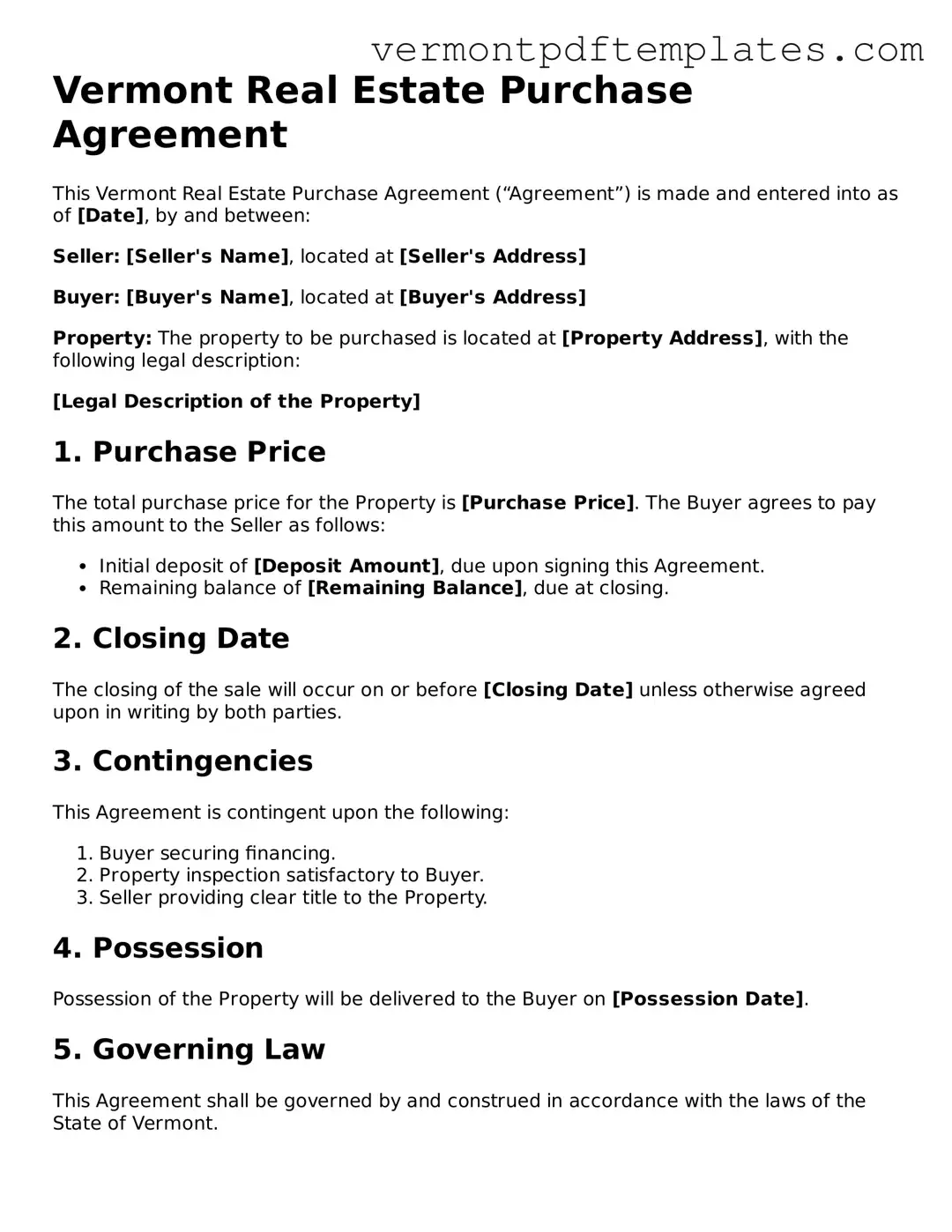The Vermont Real Estate Purchase Agreement form is similar to the Residential Purchase Agreement used in many states. Both documents outline the terms of the sale, including the purchase price, contingencies, and closing date. They serve to protect both the buyer and seller by clearly defining each party's obligations. The structure and essential components are largely the same, ensuring that all necessary information is included to facilitate a smooth transaction.
Another similar document is the Commercial Purchase Agreement. This form is tailored for commercial properties and includes specific clauses related to zoning, environmental assessments, and financing options. While the basic structure mirrors that of the Vermont Real Estate Purchase Agreement, it addresses the unique aspects of commercial transactions, making it essential for buyers and sellers in that sector.
The Offer to Purchase is also comparable. This document is typically the first step in the buying process, allowing a buyer to propose terms to the seller. Like the Vermont Real Estate Purchase Agreement, it details the price and conditions of the sale. However, the Offer to Purchase is often more informal and may lead to negotiations before a formal agreement is signed.
The Lease Purchase Agreement shares similarities as well. This document allows a tenant to purchase the property they are renting at a later date. It outlines the terms of the lease and the purchase option, much like the Vermont Real Estate Purchase Agreement outlines the sale. Both documents aim to protect the interests of the parties involved while facilitating a potential future transaction.
The Exclusive Right to Sell Agreement is another related document. This agreement gives a real estate agent the exclusive right to sell a property for a specified period. While it focuses on the listing and marketing of the property, it complements the Vermont Real Estate Purchase Agreement by ensuring that the seller has professional representation, which can help streamline the sale process.
The Seller's Disclosure Statement is also important. This document requires sellers to disclose known issues with the property. While it does not directly outline the terms of sale, it is crucial for buyers to understand the property's condition before entering into a purchase agreement. The Vermont Real Estate Purchase Agreement may reference this document to ensure all parties are aware of any potential issues.
The Buyer’s Agency Agreement is another document that aligns closely with the Vermont Real Estate Purchase Agreement. This agreement establishes the relationship between a buyer and their agent. It details the agent's responsibilities and the buyer's obligations. Both documents work together to ensure that the buyer is represented effectively throughout the purchase process.
Understanding the details of various real estate agreements can help buyers and sellers navigate transactions more effectively, similar to how the ADP Pay Stub form serves as a critical tool for financial management. For further insights into this document, you can refer to https://smarttemplates.net/fillable-adp-pay-stub, which provides valuable information on its structure and significance in payroll processes.
The Counteroffer is also similar in nature. When a seller responds to an initial offer with different terms, a counteroffer is created. This document outlines the new terms and conditions. It serves as a negotiation tool, much like the Vermont Real Estate Purchase Agreement, as both documents aim to finalize the sale under mutually agreed-upon conditions.
Finally, the Addendum to Purchase Agreement can be compared as well. This document is used to modify or add to the terms of the original purchase agreement. It might include contingencies or additional clauses that were not included in the initial agreement. Like the Vermont Real Estate Purchase Agreement, it ensures that all parties are on the same page regarding any changes or additional terms.
